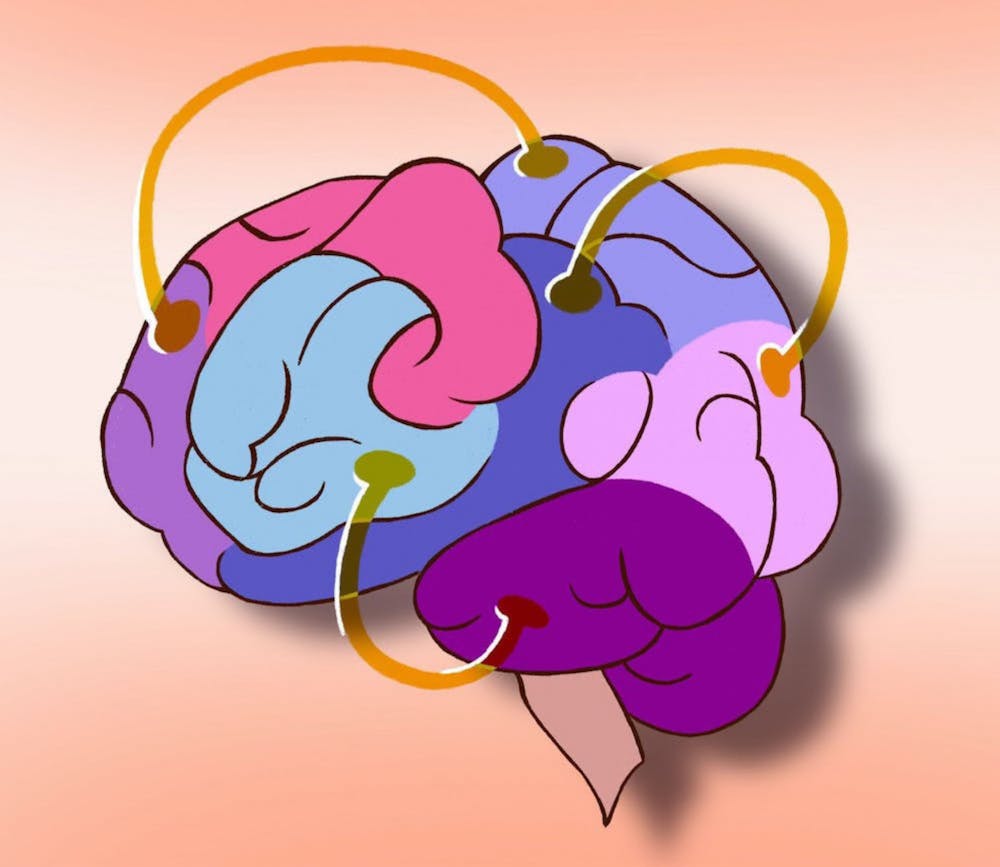A study from University researchers published earlier this month in the journal Science Advances found that the brains of people with the same ideological beliefs process political content similarly — and that the brains of liberal-leaning individuals process this information differently from those of conservative-leaning individuals.
When “the brain interprets the world around us … there’s just a stream of information, and the brain has to take all of that information that is being processed through the different senses, and it has to make sense of that information in a useful way,” said Oriel FeldmanHall, associate professor of cognitive, linguistic and psychological sciences and one of the study’s authors.
FeldmenHall described a process called “segmentation” for processing information. Brains of conservative individuals segment chunks of information in ways that are similar to one another — but that are “very” different from the ways liberal individuals segment that same political content, according to FeldmanHall.
Seeing this difference in how partisans interpret political information led the researchers to ask what was causing this response, and at what level in the psychological processing stream it was occurring, according to study author Daantje de Bruin GS, a first-year graduate student in FeldmanHall’s lab.
“We don’t say that because you have this political ideology your brain works in this way or because your brain works in this way you have this political ideology because we cannot really make those claims — so that’s an important nuance,” de Bruin said. “But we do see that political partisanship and polarization expresses itself even at the neural level.”
The study asked participants to report their political ideology on a 0-100 scale using a slider ranging from “extremely liberal” to “extremely conservative,” with zero falling on the liberal end of the scale and 100 on the conservative end, according to de Bruin. Participants who reported a score below 50 were categorized as having a liberal ideology and those who reported a score above 50 were categorized as having a conservative ideology.
The study recruited 360 potential participants through posters, flyers, advertisements and visits to political meetings and political organizations. From those potential participants, 44 individuals — 22 liberals and 22 conservatives, matched in gender distribution and educational level between the two groups — were selected, according to de Bruin.
Participants performed a series of experiments including a word placement task in which they placed 30 words related to political issues such as “abortion,” “freedom,” “police” and “immigration” in a circle based on how strongly they associate these words with each other.
Following this task, participants were placed into a functional magnetic resonance imaging scanner — which measures blood flow in the brain — and were asked to read politically charged words as well as control words with no political connotation to measure brain activity elicited by these specific words.
“The fact that we can just show people words that are slightly political in nature … and already the brain is polarizing that information suggests just how deeply entrenched these politically polarized views are,” FeldmanHall said.
While in the scanner, participants also watched political videos, including a segment of the 2016 vice presidential debate between Virginia Sen. Tim Kaine and former Vice President Mike Pence and a video on abortion legislation changes.
Participants “could see the same political information and yet a Republican and a Democrat (would) come out of that same scenario saying two different narratives of what happened,” FeldmanHall said.
Yuan Chang Leong, an assistant professor in the Department of Psychology at the University of Chicago, found similar results in his own research. In a 2020 study Leong co-authored examining how conservative and liberal ideologies drive neural polarization, he found that “despite watching the exact same video, the neural responses diverge between participants with different political beliefs.”
The areas of the brain most involved in the segmentation process and synchronized responses were the amygdala and the striatum — regions involved in emotional processing and value-based decision making respectively, according to FeldmanHall. These areas “make sense because we’re talking about how people are listening to and processing content that they come to value and have emotional experiences around,” she added.
Similarly, Leong’s paper found that the magnitude of neural polarization was stronger when participants watched videos that included “emotional or threat-related language.”
“This paper gives us new insight into what might actually be driving these divergent responses that we see,” Leong said, adding that while his paper argues that neural polarization is driven by the language that people use, the paper from FeldmanHall’s lab builds on this idea by suggesting that the polarization is actually a result of “what these words mean to different groups.”
“These words carry the same connotation for people within an ideology and different connotations between people with different ideologies,” Leong explained. “That predicts the degree to which our brains respond.”
Since the data used in this study was collected in 2019 “when immigration was a very hot topic, … if you collected data now other things like abortion might be way more polarized just because of recent developments in the country,” de Bruin said. “It (would) be cool to integrate those recent developments into future studies.”
“I think it’s an innovative (and) important paper,” Leong said. “It’s a data set that’s also very unique, that came at a time when political polarization was a very big problem.”
Leong added that the new study’s ability to bring together people with different political beliefs and collect this data was “a Herculean effort.”
Moving forward, the researchers plan to investigate how other parts of the body respond to these political phenomena. FeldmanHall said that the researchers hope to use variables such as eye tracking, which can measure attention, and skin conduction or hand sweating, which can measure emotional arousal, to “get a more holistic picture of how people are responding to political content.”
Gabriella was a Science & Research editor at The Herald.





